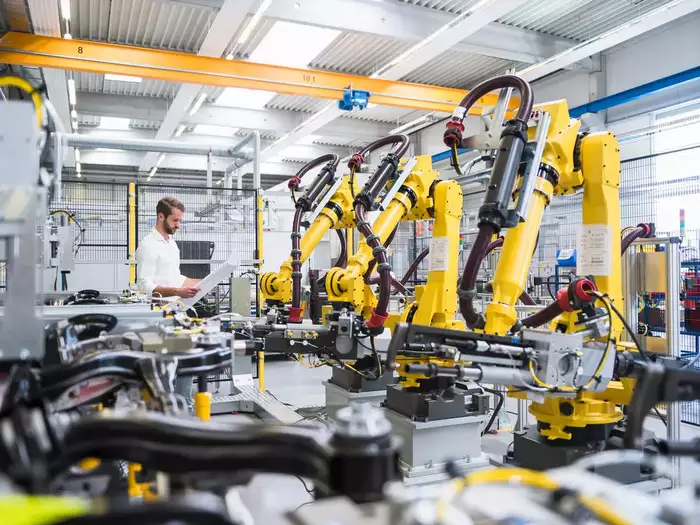Revolutionising the workplace: How RPA is transforming business processes

Robotic Process Automation (RPA) continues to have significant business relevance to automate repetitive daily tasks and boost efficiency and performance.
In the workplace of the future, RPA continues to evolve and adapt to meet the changing needs of businesses.
The deployment of RPA-based intelligent tools gives businesses access to crucial insights and allows them to focus on the end goal by simplifying business processes.
There is no getting around the fact that future workplaces will witness an increase in the mix of humans and robots working side-by-side. We are, however, not talking about physical robots. The robots we are referring to here are robotic process automation (RPA) bots that can interact with computer systems, the same way human employees would, to complete certain tasks efficiently and swiftly without human intervention. The incorporation of RPA into an organisation’s standard operating procedures will continue to be a critical technology to boost productivity, reduce costs, and complete tedious, repetitive tasks accurately and rapidly.
What exactly is RPA?
In simplest terms, RPA is the use of modern technology and software to automate rule-based business processes. Process-centric organisations can benefit greatly from incorporating RPA to take over various tasks. RPA boosts overall efficiency, improves workflows, and frees employees to take on higher-value tasks. Once a bot observes a human worker and records the process workflow, it completes rules-based tasks. It can mimic the way workers interact with their computer systems to take over these actions. Once implemented, these bots can log into systems, input or extract data as needed, navigate pages, and a lot more.
Employees at most modern workplaces spend hours daily on repetitive computer tasks that can be easily automated. RPA can complete these tasks in a matter of seconds, saving a great deal of time and enabling these employees to be much more productive. And increasingly, RPA bots are integrating with AI and Machine Learning solutions, intelligent data extraction solutions, and other emerging digital solutions to drive greater efficiencies at the workplace by automating more complex tasks. These technologies aid in process simplification by allowing users to focus on the ultimate goal rather than the steps used to achieve it.
Let’s take a look at some tasks that are perfectly suited to RPA in this context:
Workload prioritisation: A considerable amount of time is spent on sorting workload and prioritising tasks based on importance and urgency to meet SLAs. RPA embedded in platforms or independently coupled with AI/ML can eliminate or significantly reduce effort in this time-consuming process by presenting workers with an organised workload, lining the important tasks in the order, and flagging the ones requiring immediate action on top.
Report Generation: RPA can automate a reporting function by compiling required data from multiple sources to generate reports in required formats. Compilation of reports can be performed using external as well as internal organisational data to provide real-time information to aid decision-making. It can also collate data in different formats into a single, standardised report.
Data entry: The oldest use case of RPA is data entry and still relevant. As the technical landscape of organisations gets more complex, employees spend a lot of time extracting and compiling data from various sources in the interim-stage before large scale ERP or applications transformation takes place. RPA can effectively support data entry into systems, exchange of data between systems and when integrated with intelligent OCR solutions speeds up the process further by extracting data from scanned documents, images, or PDFs for entry into financial systems.
Accounting duties: Automating simple financial duties can save a lot of time and effort for the accounts department while completely eliminating human error. RPA bots can create expense reports, match invoices to purchase orders, perform basic reconciliations of statements, and perform several other basic accounting processes. RPA benefits from integrating with AI/ML solutions in this area.
HR duties: RPA can take over several time-consuming HR department duties, such as ordering business cards, acquiring security access, or assigning workspaces to new employees. It can also process employee benefit forms, make payroll updates, and handle employee exit procedures. With RPA handling these various back-office HR duties, HR staff can focus on more important tasks that demand critical thinking, human interaction, and faster decision-making.
Customer service: RPA can streamline the customer service workflow in various ways, including scanning reviews, identifying complaints, updating customer details, chatbot integration for auto-response, and various other tasks that customer service representatives spend a lot of time on. RPA can also perform monitoring of customer service infrastructure by performing diagnostics and self-heal tasks.
The incorporation of RPA into an organisation’s various processes will continue to revolutionise workplaces in the future. RPA bots take seconds to complete tasks that would take several man-hours and eliminate the possibility of errors in the process. This enables organisations to easily scale up or down to handle changing business needs and workloads, enabling businesses to be more responsive to market demands.
Handing over tasks to RPA also allows employees to focus on duties that demand creativity, strategy, problem-solving, and other skills that software doesn’t possess. This helps improve data accuracy and security by reducing the risk of human error and ensuring compliance with data protection regulations.
While RPA may not be the only technology being used for automation, it still has many advantages, including a relatively low cost of implementation, ease of use, and the ability to work with a wide variety of applications and systems. So, as RPA faces competition from other technologies in the market, it is still a valuable tool in the automation toolkit. RPA will continue to be relevant in the future, and the sooner businesses adopt this technology, the sooner they will see improved performance and ROI, ensuring long-term sustainability.